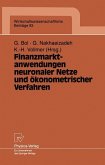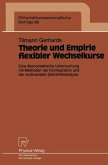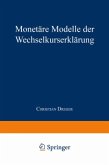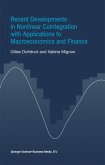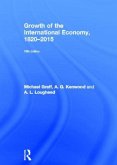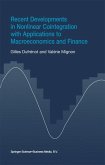These notes draw from the Theory of Cointegration in order to test the monetary model of exchange rate determination.
Previous evidence shows that the monetary model does not capture the short run dynamics of the exchange rate, specially when assessed in terms of forecasting accuracy.
Even though the monetary equations of exchange rate determination may be bad indicators of how exchange rates are determined in the short run, they couldstill describe long run equilibrium relationships between the exchange rate and its fundamentals. Stationary deviations from those long run relationships are allowed in the short run. This book also addresses severalissues on Cointegration. Chapter 6 studies the small sample distribution of the likelihood ratio test statistics (on the dimension and restrictions on the cointegrating space) under deviations from normality.
This monograph also focuses on the issue of optimal prediction in partially nonstationary multivariate time series models. In particular, it caries out an exchange rate (prediction exercise.)
This monograph is the result of merging parts of the authors's doctoral dissertations presented at The University of Pennsylvania in the spring of 1991. We would like to thank the members of our dissertation committees, Francis X. Diebold, Roberto S. Mariano and Marc Nerlove for their guidance and helpful comments. We received very good comments from Albert Ando, Yin-Wong Cheung, William English, S0ren Johansen, W. Krelle, Bruce Mizrach and seminar participants at the University of Pennsylvania and the XV Simposio de Analisis Econ6mico in Barcelona. Our thanks also to Werner A. MUller of Springer-Verlag for his help. Of course, any remaining errors are ours. We are indebted to Departamento de Trabajo del Gobierno Vasco and the Department of Economics at the University of Pennsylvania for financial support through our graduate studies. The research underlying this work was partially supported by two Alfred P. Sloan Foundation Fellowships. We could not have written this monograph without the support received from our families. Sections wi thin chapters are numbered using roman numerals. References to equations within the same chapter are of the form (11.7) whereas if they correspond to different chapters are (2.1V.4). TABLE OF CONTENTS CHAPTER 1. Introduction 1 CHAPTER 2. The Monetary Model of Exchange Rate Determination. I. Introduction. . . . 7 II. Monetary Models . . . 8 III. The Asset Market View 13 IV. Empirical Evidence 15 V. Treatment of Nonstationary Variables 16 CHAPTER 3. Long Run Exchange Rate Determination I.
Hinweis: Dieser Artikel kann nur an eine deutsche Lieferadresse ausgeliefert werden.
Previous evidence shows that the monetary model does not capture the short run dynamics of the exchange rate, specially when assessed in terms of forecasting accuracy.
Even though the monetary equations of exchange rate determination may be bad indicators of how exchange rates are determined in the short run, they couldstill describe long run equilibrium relationships between the exchange rate and its fundamentals. Stationary deviations from those long run relationships are allowed in the short run. This book also addresses severalissues on Cointegration. Chapter 6 studies the small sample distribution of the likelihood ratio test statistics (on the dimension and restrictions on the cointegrating space) under deviations from normality.
This monograph also focuses on the issue of optimal prediction in partially nonstationary multivariate time series models. In particular, it caries out an exchange rate (prediction exercise.)
This monograph is the result of merging parts of the authors's doctoral dissertations presented at The University of Pennsylvania in the spring of 1991. We would like to thank the members of our dissertation committees, Francis X. Diebold, Roberto S. Mariano and Marc Nerlove for their guidance and helpful comments. We received very good comments from Albert Ando, Yin-Wong Cheung, William English, S0ren Johansen, W. Krelle, Bruce Mizrach and seminar participants at the University of Pennsylvania and the XV Simposio de Analisis Econ6mico in Barcelona. Our thanks also to Werner A. MUller of Springer-Verlag for his help. Of course, any remaining errors are ours. We are indebted to Departamento de Trabajo del Gobierno Vasco and the Department of Economics at the University of Pennsylvania for financial support through our graduate studies. The research underlying this work was partially supported by two Alfred P. Sloan Foundation Fellowships. We could not have written this monograph without the support received from our families. Sections wi thin chapters are numbered using roman numerals. References to equations within the same chapter are of the form (11.7) whereas if they correspond to different chapters are (2.1V.4). TABLE OF CONTENTS CHAPTER 1. Introduction 1 CHAPTER 2. The Monetary Model of Exchange Rate Determination. I. Introduction. . . . 7 II. Monetary Models . . . 8 III. The Asset Market View 13 IV. Empirical Evidence 15 V. Treatment of Nonstationary Variables 16 CHAPTER 3. Long Run Exchange Rate Determination I.
Hinweis: Dieser Artikel kann nur an eine deutsche Lieferadresse ausgeliefert werden.


